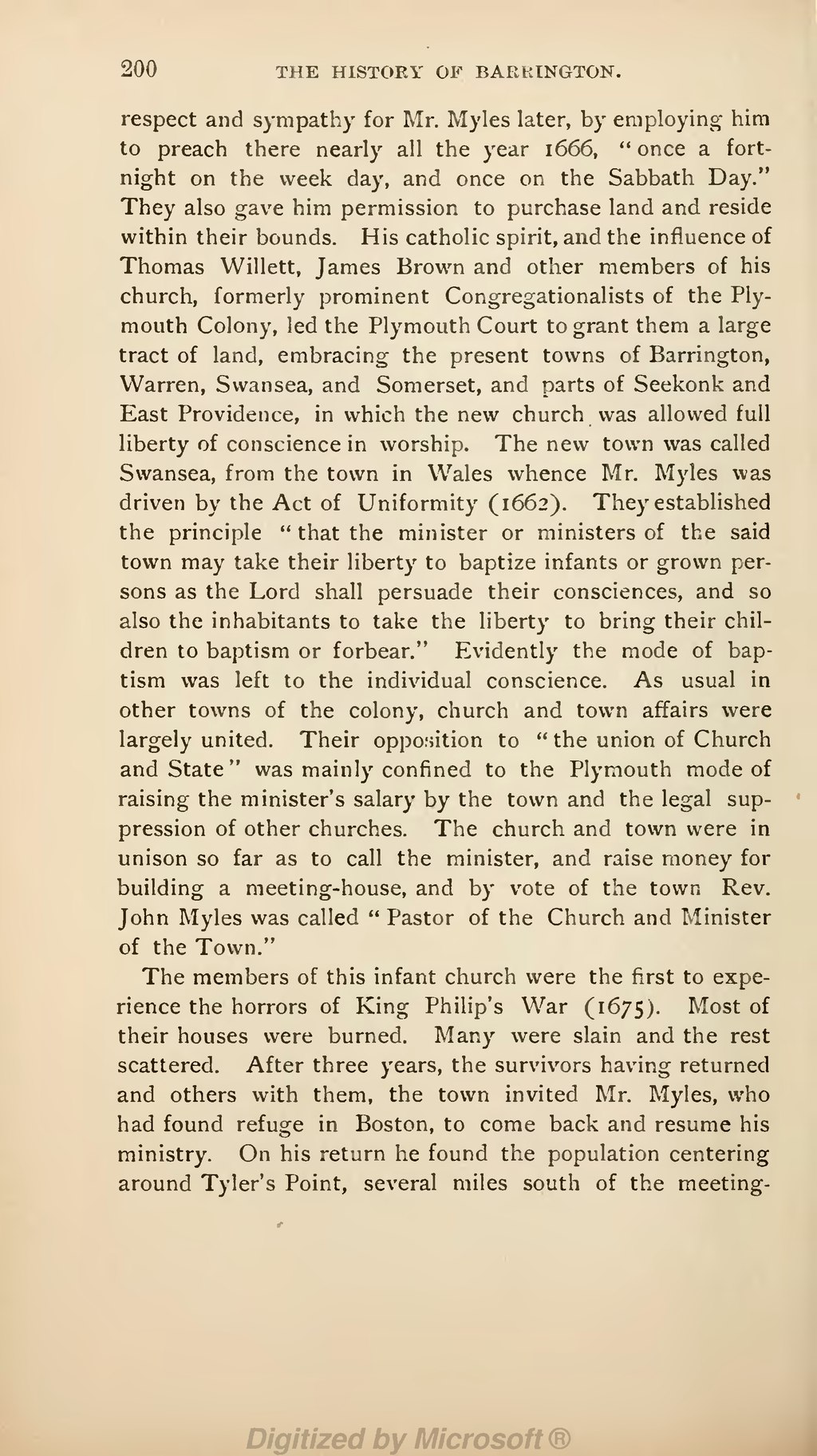200 THE HISTORY OF BARRINGTON. respect and sympathy for Mr. Myles later, by employing- him to preach there nearly all the year 1666, " once a fort- night on the week day, and once on the Sabbath Day." They also gave him permission to purchase land and reside within their bounds. His catholic spirit, and the influence of Thomas Willett, James Brown and other members of his church, formerly prominent Congregationalists of the Ply- mouth Colony, led the Plymouth Court to grant them a large tract of land, embracing the present towns of Barrington, Warren, Swansea, and Somerset, and parts of Seekonk and East Providence, in which the new church was allowed full liberty of conscience in worship. The new town was called Swansea, from the town in Wales whence Mr. Myles was driven by the Act of Uniformity (1662). They established the principle " that the minister or ministers of the said town may take their liberty to baptize infants or grown per- sons as the Lord shall persuade their consciences, and so also the inhabitants to take the liberty to bring their chil- dren to baptism or forbear." Evidently the mode of bap- tism was left to the individual conscience. As usual in other towns of the colony, church and town affairs were largely united. Their opposition to " the union of Church and State " was mainly confined to the Plymouth mode of raising the minister's salary by the town and the legal sup- pression of other churches. The church and town were in unison so far as to call the minister, and raise money for building a meeting-house, and by vote of the town Rev. John Myles was called " Pastor of the Church and Minister of the Town." The members of this infant church were the first to expe- rience the horrors of King Philip's War (1675). Most of their houses were burned. Many were slain and the rest scattered. After three years, the survivors having returned and others with them, the town invited Mr. Myles, who had found refuge in Boston, to come back and resume his ministry. On his return he found the population centering around Tyler's Point, several miles south of the meeting-
Page:History of Barrington, Rhode Island (Bicknell).djvu/252
This page needs to be proofread.
